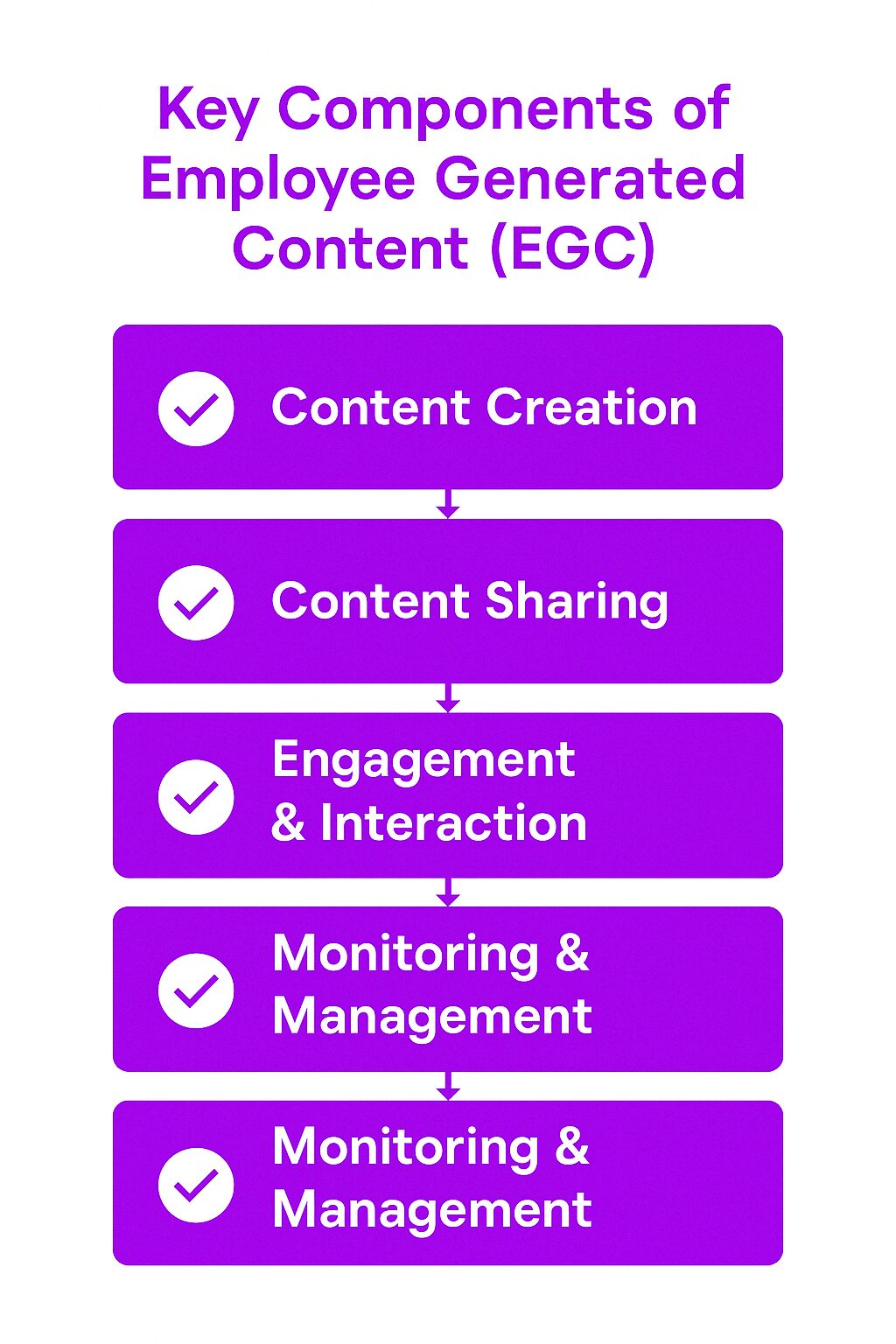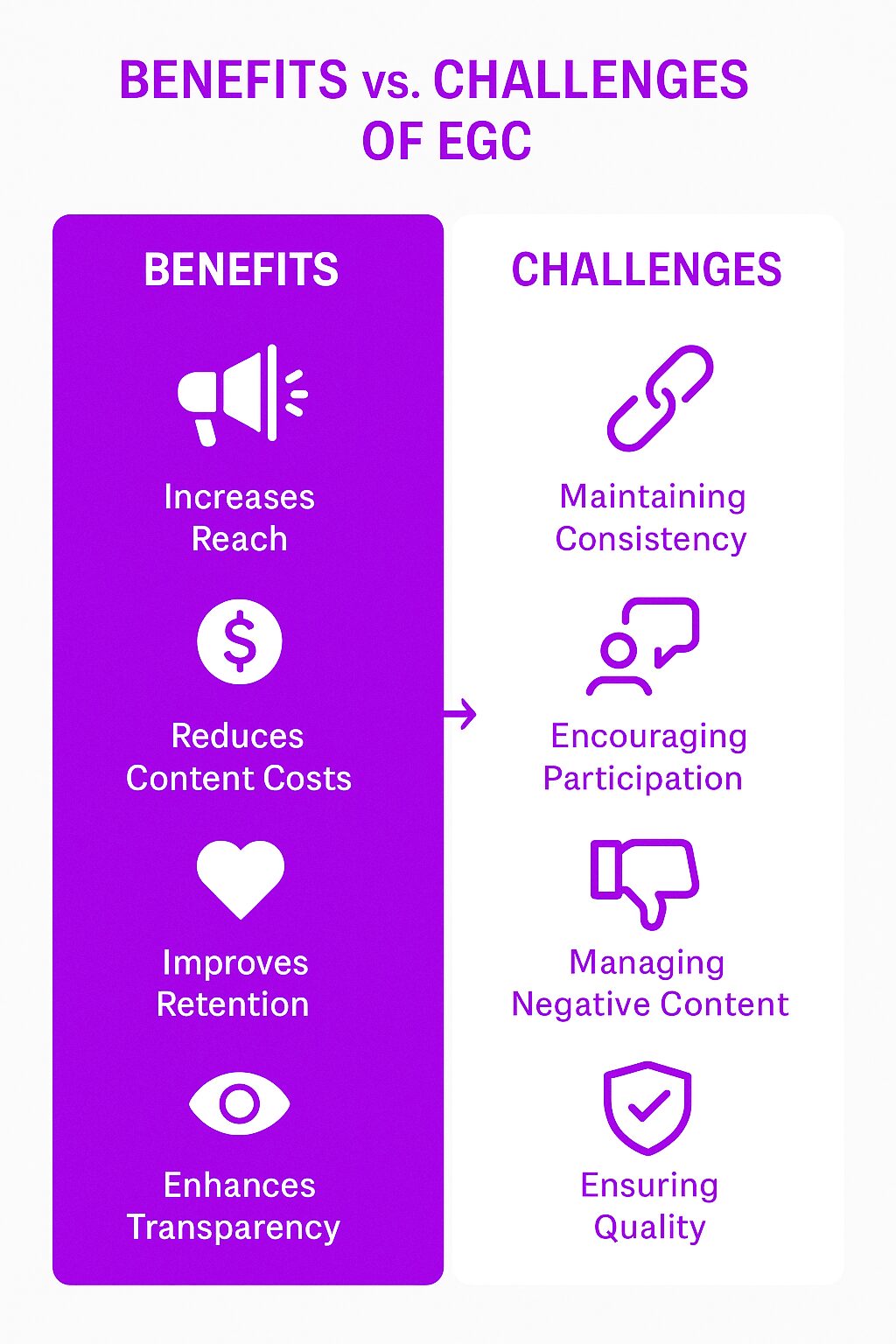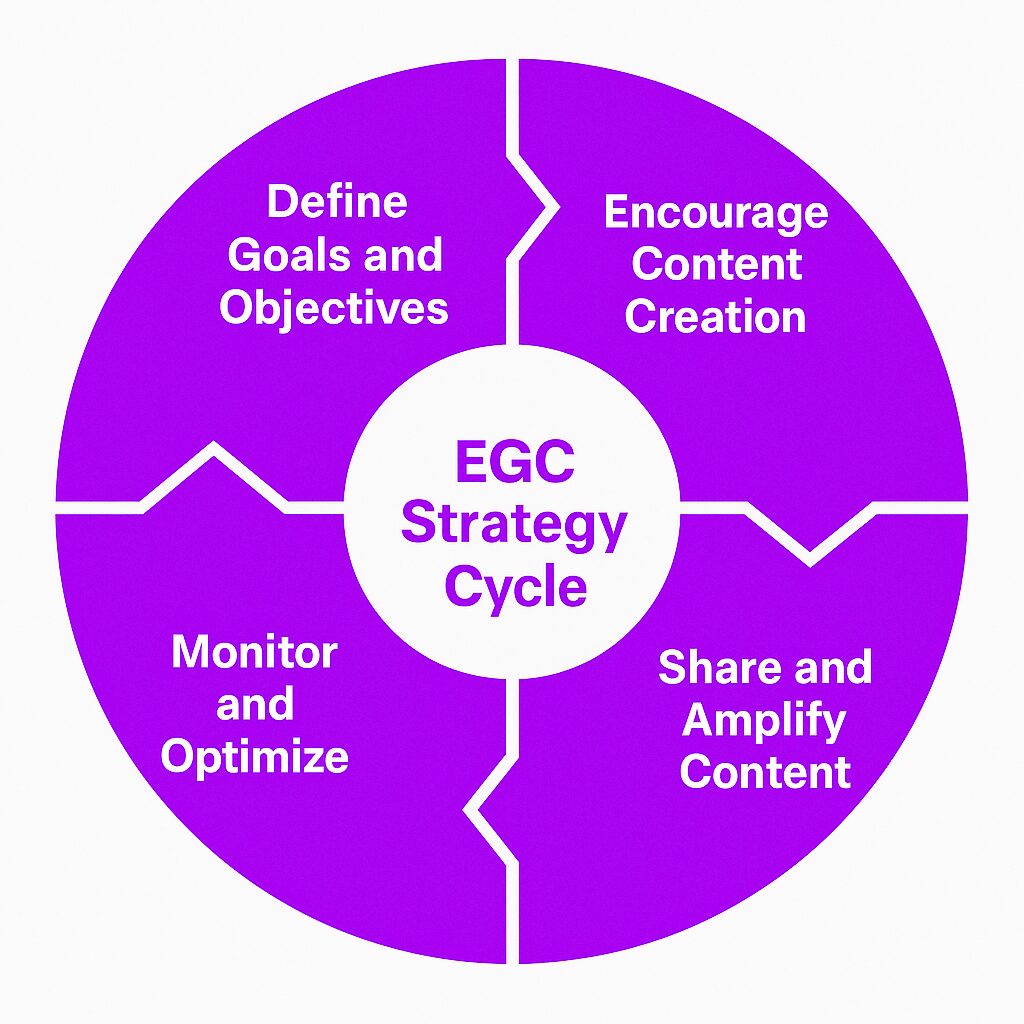What Is Employee Generated Content?
Employee generated content refers to any content created and shared by employees about their workplace. This content can take many forms, including blog posts, videos, testimonials, and social media updates. Unlike traditional marketing materials, EGC offers an authentic look into company culture, work experiences, and employee satisfaction.
Companies encourage EGC to build trust with potential hires, engage customers, and strengthen brand identity. It serves as a bridge between the organization and the outside world, making employees the voice of the company. EGC is a powerful way to humanize a brand and showcase its work environment.
Definition of EGC
Employee-Generated Content (EGC) refers to any content created and shared by employees of a company to promote the company’s brand, values, or products and services. This type of content can take various forms, including text, videos, images, testimonials, and more. EGC is a form of User-Generated Content (UGC) that leverages the authenticity of the workforce to resonate with audiences. By showcasing real experiences and insights from employees, EGC provides a genuine and relatable perspective that traditional marketing materials often lack.
Importance of EGC in Company Culture
EGC plays a vital role in showcasing a company’s culture and values. By encouraging employees to create and share content, companies can humanize their brand and provide a more authentic view of their culture. This helps to attract potential candidates who align with the company’s values and culture, ultimately leading to a more positive and supportive work environment. When employees share their stories and experiences, it not only boosts their engagement but also paints a vivid picture of the company’s day-to-day life, making it more appealing to job seekers and prospective employees.
How Employee Generated Content Works
EGC is driven by authenticity. Employees create content based on their real experiences, making it more relatable and engaging. Companies can foster EGC by providing platforms, encouraging participation, and recognizing contributions.
EGC can be spontaneous or structured. Some employees may share workplace experiences organically, while others might participate in company-led initiatives. Organizations use EGC to highlight achievements, company culture, and employee perspectives.
Key Components of EGC
Content Creation
Employees generate content based on their experiences. This can include:
-
Personal stories about their career journey.
-
Behind-the-scenes insights into projects and teamwork.
-
Company event coverage and participation highlights.
-
Success stories about career growth within the company.
Creating content in this manner is highly beneficial for recruitment marketing, as it builds trust and enhances engagement.
Content Sharing
Once created, content must be shared through the right channels. Common distribution methods include:
-
Internal communication platforms.
-
Company blogs or newsletters.
-
Social media posts featuring employee testimonials.
-
External job review sites where employees share feedback.
Engagement & Interaction
Encouraging discussions around EGC makes it more effective. Companies can:
-
Feature EGC on official brand channels.
-
Engage with employees by liking, commenting, or resharing posts.
-
Create campaigns where employees contribute specific types of content.
Monitoring & Management
While EGC is employee-driven, organizations must ensure content aligns with company values. This doesn’t mean controlling every post but providing guidelines and support. Some companies use moderation tools or approval processes for branded content. Inconsistent messaging can harm brand credibility and customer loyalty, so leaders should equip employees with resources and guidelines to help ensure consistent and positive messaging.
Why Employee Generated Content Matters
Builds Authenticity
Customers and potential hires trust content from current employees more than polished corporate messaging. EGC provides an unfiltered look at the company, helping build credibility.
Strengthens Employer Branding
Prospective employees rely on real experiences when choosing an employer. EGC showcases what it’s like to work at a company, reflecting the company’s values and influencing hiring decisions.
Improves Employee Engagement
Encouraging employees to share content makes them feel valued. It fosters a sense of pride in their work and strengthens their connection to the company.
Boosts Customer Trust
Customers prefer engaging with brands that feel human. EGC shows the people behind the brand, making it more relatable.
Cost-Effective Content Creation
EGC is a cost-effective way to create engaging content that resonates with audiences. By leveraging the creativity and expertise of employees, companies can reduce their marketing budgets and create high-quality content that showcases their brand and values. This approach also helps to empower employees, making them feel more connected to their company and invested in its success. Encouraging employees to share their unique perspectives and experiences can lead to a diverse array of content that is both authentic and compelling, without the need for expensive production resources.
Benefits and Challenges of EGC
Benefits
-
Increases Reach – Employees amplify company messages by sharing content with their networks.
-
Reduces Content Costs – EGC provides authentic marketing material without requiring large production budgets.
-
Improves Retention – Employees who feel valued are more likely to stay.
-
Enhances Transparency – Provides an honest look into company culture and work environment.
Challenges
-
Maintaining Consistency – Not all employee content may align with company branding.
-
Encouraging Participation – Some employees may hesitate to share content.
-
Managing Negative Content – Employees may express concerns publicly, which companies must address constructively.
-
Ensuring Quality – Content should reflect company values without feeling forced or scripted.
EGC Strategy
Define Goals and Objectives for EGC
To develop an effective EGC strategy, companies should start by defining clear goals and objectives. This includes identifying the target audience, determining the type of content to be created, and establishing metrics to measure success. By setting specific goals and objectives, companies can ensure that their EGC strategy aligns with their overall marketing strategy and supports their business objectives.
Some potential goals and objectives for an EGC strategy include:
-
Increasing employee engagement and participation
-
Showcasing company culture and values
-
Attracting top talent and prospective employees
-
Creating engaging content that resonates with audiences
-
Reducing marketing budgets and increasing cost-effectiveness
-
Empowering employees and promoting a positive work environment
By defining clear goals and objectives, companies can create an EGC strategy that supports their business objectives and helps to achieve their desired outcomes. This structured approach ensures that the content created is not only authentic but also strategically aligned with the company’s broader goals.
Best Practices for Encouraging Employee Generated Content
Foster a Culture of Storytelling
Employees should feel comfortable sharing experiences. Leadership can set the tone by encouraging open communication and celebrating employee voices.
Sharing experiences also contributes to an employee’s personal brand, enhancing their recognition and engagement within the organization.
Provide Guidelines Without Restriction
Rather than controlling EGC, offer simple guidelines to ensure consistency. Clear messaging on brand values and content expectations helps employees create meaningful content.
Recognize and Reward Contributions
Employees are more likely to participate when their contributions are acknowledged. Recognizing top contributors through shout-outs, incentives, or featured content can drive engagement.
Use the Right Platforms
Make it easy for employees to share content by providing internal platforms or company-branded hashtags. A centralized content hub can help employees find inspiration and submit their content.
Lead by Example
When executives and managers participate in EGC, employees are more likely to follow. Leadership involvement fosters a culture of engagement and authenticity.
Related Concepts
Employer Branding
EGC plays a major role in shaping an employer’s reputation. Companies that showcase company culture by highlighting employee experiences through authentic content attract top talent.
Employee Advocacy
EGC is a key part of advocacy programs, where employees become brand ambassadors. Encouraging employees to share positive experiences boosts company credibility.
Content Marketing
EGC complements traditional marketing by providing fresh, authentic material that resonates with audiences.
Internal Communications
EGC strengthens workplace communication by encouraging employees to share knowledge, experiences, and successes with their peers.
Real-World Applications of EGC
Tech Companies Showcase Company Culture
Many tech firms use EGC to highlight their company’s culture, which plays a crucial role in attracting job seekers. Employees share insights about company projects, diversity initiatives, and professional growth, making it easier for job seekers to assess company fit.
Retail and Customer Service Brands Using Employee Advocacy
Retail brands encourage employees to post about new product launches and in-store experiences. This builds credibility and enhances customer trust.
Professional Services Leveraging Thought Leadership
Consulting firms use EGC to share employee expertise. Blog posts, LinkedIn articles, and webinars featuring employees position the company as a thought leader.
Final Thoughts
Employee Generated Content is a powerful way for companies to build trust, strengthen branding, and engage employees. By fostering a culture where employees feel encouraged to share their experiences, organizations create authentic connections with both talent and customers. The key is balancing freedom and guidance, ensuring employees feel empowered while maintaining brand alignment.








